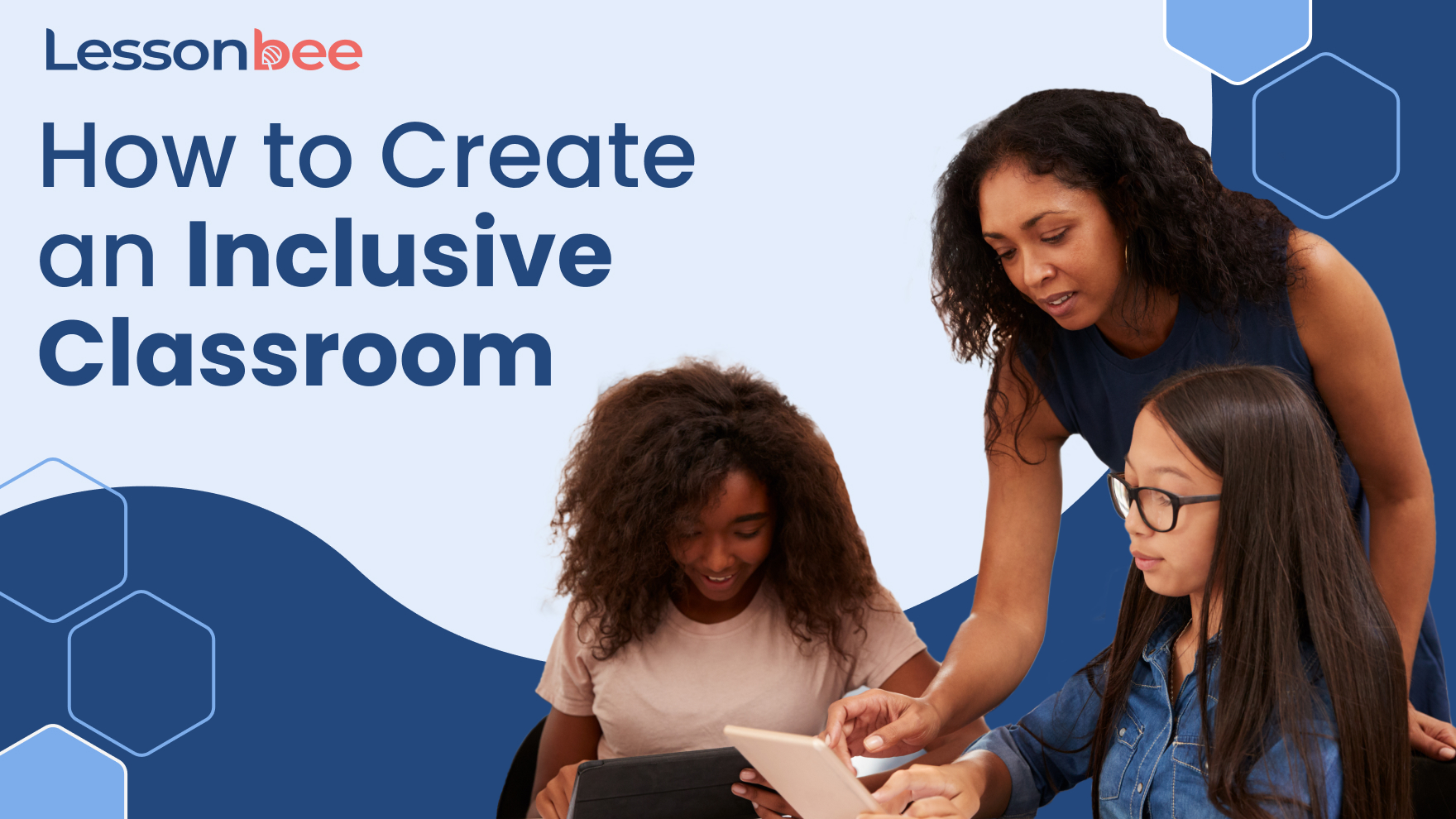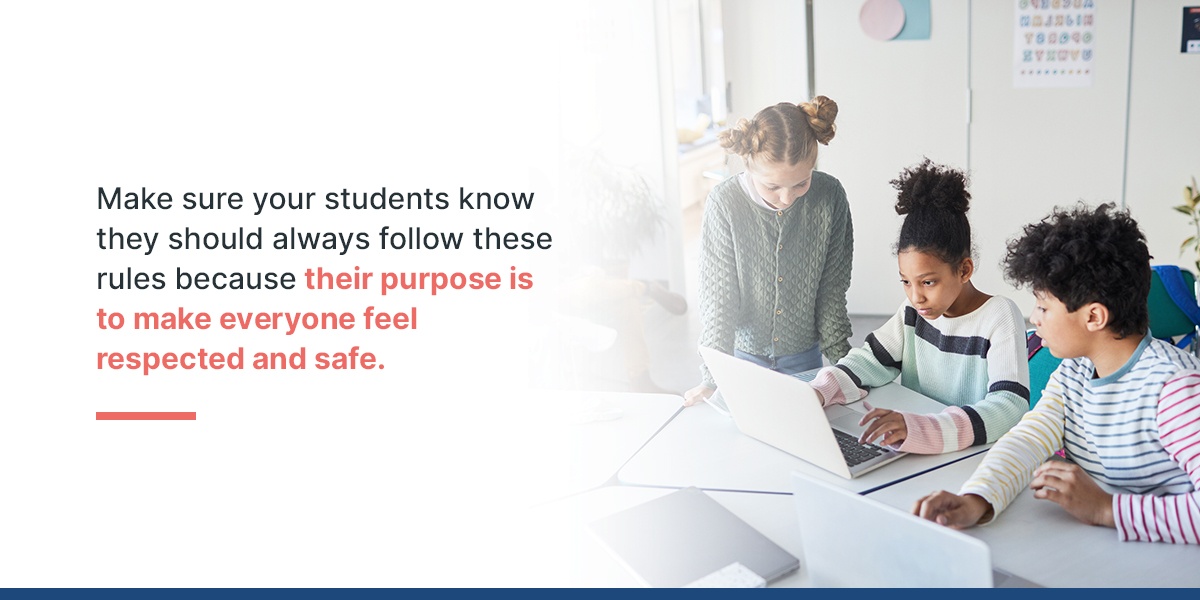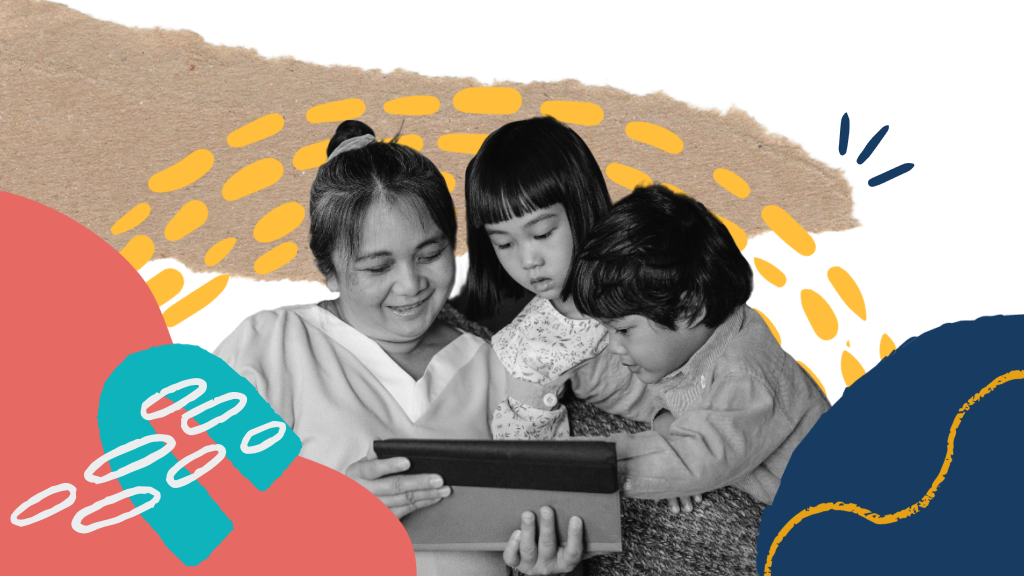How to Create an Inclusive Classroom

Creating an inclusive classroom allows all students to feel respected, happy and safe in their learning environment. These feelings help them learn and develop better than they would in an unsupportive environment. Inclusive environments help students learn about diverse backgrounds and perspectives, communicate with their peers and practice empathy.
To create inclusive classrooms, teachers should educate themselves, set clear behavior standards for students, model respect and provide space for students to practice empathy. Various inclusive classroom strategies can help teachers accomplish these goals and support their students.
What Is an Inclusive Classroom?
An inclusive classroom is a learning environment that supports all students, no matter what their individual needs or learning barriers are. Creating an inclusive learning environment means teachers and other school staff provide students with equal achievement opportunities and learning access. A student may find learning and achievement more difficult if they:
- Speak English as a second language.
- Come from a low-income family.
- Are part of a minority community.
- Identify as a different gender or sexuality.
- Have a disability or different mental abilities.
Creating an inclusive classroom also means providing a respectful, welcoming environment that makes students feel comfortable. Teachers can implement many strategies to create inclusive, happy, safe and purposeful learning environments.
Who Benefits From Inclusive Education?
Inclusive education can benefit all students. Inclusive classroom strategies directly benefit students with additional needs, but they can also benefit students who don't need special assistance. Inclusive education strategies have no impact or a positive impact on most students without additional needs. All students can benefit from additional support and a welcoming environment.
Focus on Students' Safety
To provide a safe learning environment, teachers should focus on creating a sense of psychological safety for their students. Psychological safety is a sense that individuals can be themselves and speak up without the risk of being ridiculed, embarrassed, punished or rejected. It requires mutual respect and interpersonal trust. Teachers can facilitate safe, inclusive classrooms by creating space for difficult conversations regarding diversity. In doing so, they can mediate between students of diverse backgrounds, races, ethnicities and sexual orientations.
Creating space for difficult conversations facilitates learning, unity-building, acceptance and healing. Let students know they can come to you, and provide ways for them to share their thoughts and feelings safely. Never make a student feel embarrassed or ashamed for what they share with you. Students who feel safe at school will learn and perform better.
Inclusion Strategies
To create an inclusive classroom for your students, try integrating these strategies.
1. Elevate Your Curriculum
Make sure your curriculum represents all perspectives and doesn't exclude any certain backgrounds. For example, educational units about family structure should focus on all types of family structures, and lessons on public policy should include subjects such as race issues and other social justice topics. When using examples to talk about any subject, use multiple examples that relate to students of various backgrounds.
Additionally, don't avoid talking about historical events even if they involve sensitive topics. Use these teaching moments to have difficult conversations about events that happened historically.
2. Use Inclusive Language
Examine your current language, and ensure you use inclusive language. For example, use appropriate pronouns for individuals based on how they identify. Model inclusive language by avoiding outdated or offensive terms, and address when students use any offensive terms. Use these instances as learning opportunities. If you use American English idioms, explain what they mean so students who are non-native English speakers can also understand them.
3. Create and Enforce Class Values and Behavior Standards

Create short, simple rules for children to follow. Make sure your students know they should always follow these rules because their purpose is to make everyone feel respected and safe. Some examples of rules include the following behavioral standards:
- Aggression or violence is never allowed.
- Foul or hateful language is unacceptable.
- All peers have the right to express their thoughts and feelings.
- All peers have the right the feel respected and safe.
- Respect others' property.
Enforce your classroom rules with straightforward, proportionate and consistent consequences. For example, the consequence for speaking over another student may be that they have to talk to you after class. The first time they speak over someone, you can give a stern look or a verbal warning, and if they continue for a second time you can write their name down on a piece of paper. If they repeat the action after these warnings, you can tell them they have to see you after the lesson.
4. Create Space for Students to Practice Empathy
Create space for students to engage with one another respectfully, but don't force these instances. This allows students to listen to and learn from one another, fostering empathy. Utilizing educational mental health content can help students understand their emotions and learn how to be more empathetic toward their peers. Teaching students how to communicate and respect boundaries can help them engage with their peers respectfully.
5. Focus on Global Competence
Include global learning in your curriculum to create a culturally inclusive classroom. Global competence gives students the skills and knowledge to learn about the world, recognize diverse perspectives, communicate ideas and take action to make a difference in the world. Encourage students to be curious about the world, and teach them about various world events, cultures and global perspectives.
6. Avoid Making Assumptions Based on Stereotypes
Avoid making assumptions about students based on stereotypes, and educate your class with this mindset. For example, students with learning disabilities are not dumb, and a student who identifies as gay is not automatically attracted to every boy in the class. Similarly, a female student who is upset is not automatically on her period.
Additionally, avoid singling a student out to speak for or represent their whole group. This can make students of underrepresented identities feel like they stick out.
7. Educate Yourself
Actively learn about your students and make an effort to educate yourself as a teacher. Do your best to unlearn negative assumptions and habits. Learn about different social and cultural groups, engage in difficult conversations and remain aware of social issues. Expand your social justice vocabulary by learning the meaning of terms such as microaggression, allyship, white privilege, false equivalency and culturally responsive. The more you educate yourself about diversity, social justice and inclusion, the more you can educate your students.
Explore Lessonbee's Health and Wellness Content
Inclusive schools work hard to ensure that all students feel respected and safe in their learning environment. Teachers can create inclusive classrooms by educating themselves, listening to students, teaching empathy, building an inclusive curriculum and creating behavior standards that enforce respect. You can create an inclusive learning environment with Lessonbee's Health and Wellness content. Explore our selection of free content, or sign up for a membership that meets your classroom's needs. We provide schools with inclusive, age-appropriate and culturally responsive educational content.

Subscribe to get notified on Lessonbee updates and new blog posts







